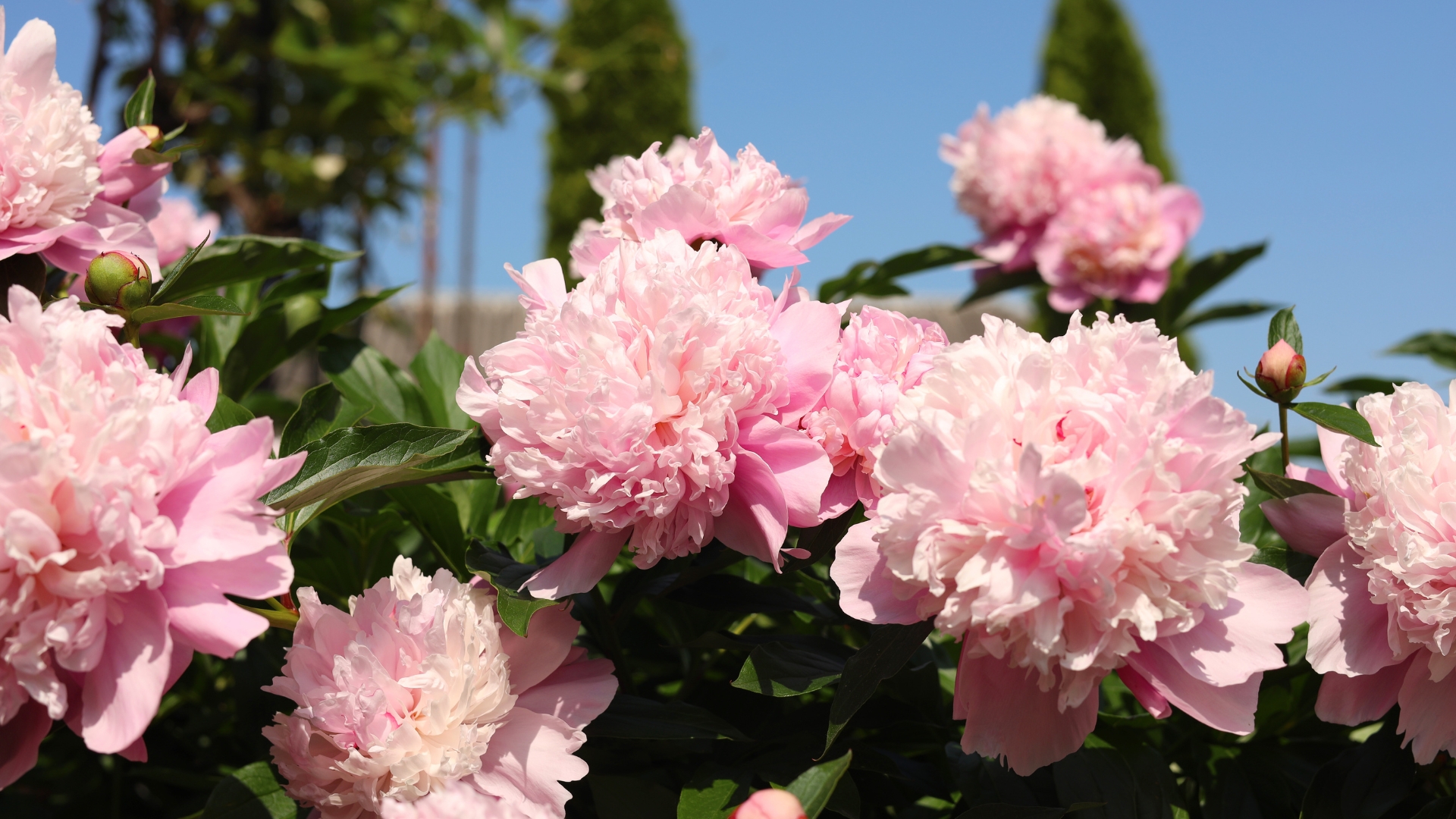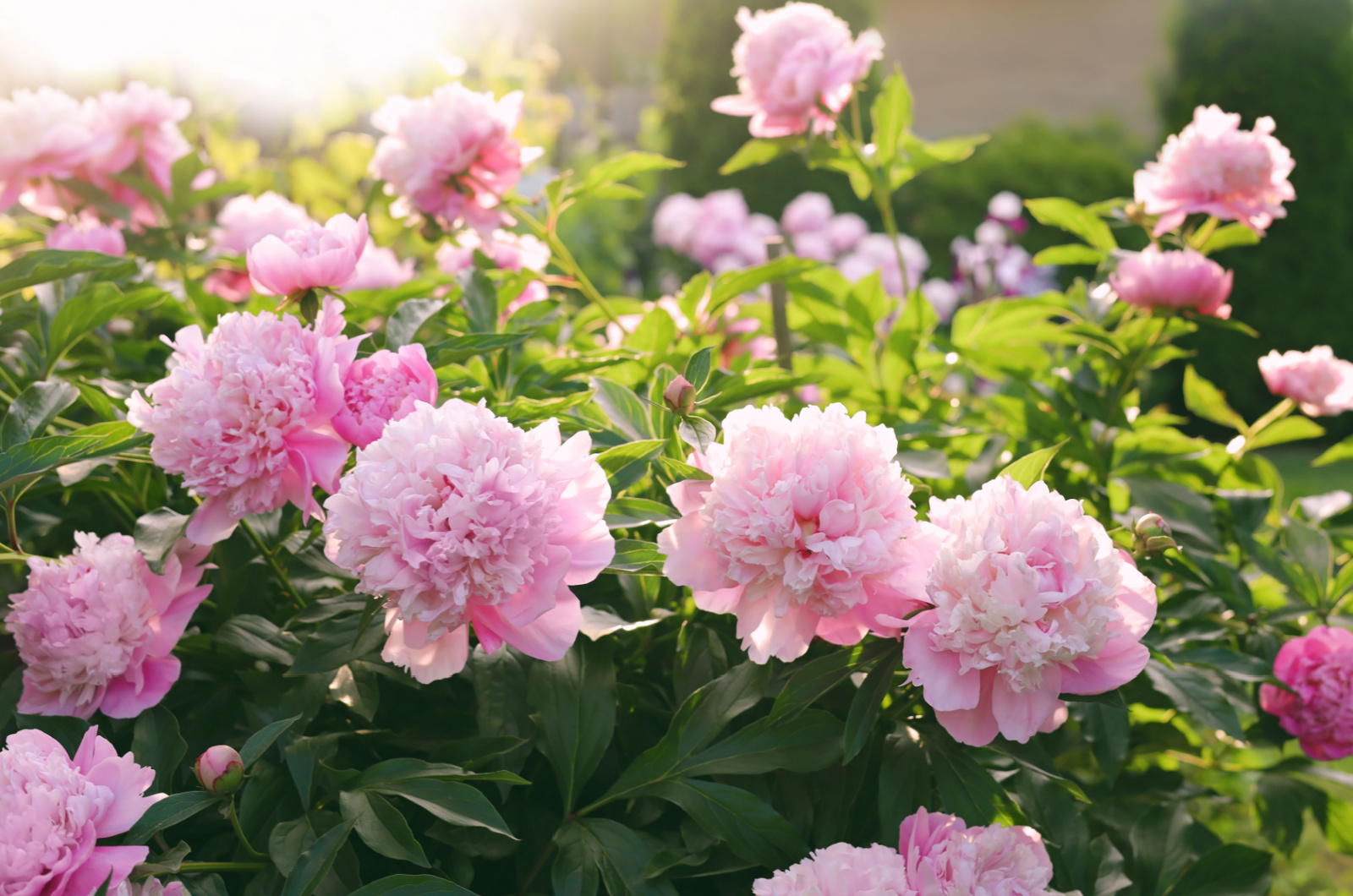Captivating peonies adorn landscapes worldwide, and these plants are renowned for their colorful blossoms and lovely fragrance.
Another reason why gardeners love these plants is because peonies aren’t fussy over their growing conditions, making them perfect for beginners.
There are many peony varieties, from the old-fashioned double varieties to new hybrids. No matter which variety you choose, you’ll need to follow the same maintenance guide.
In this article, I’ll show you how to grow peonies and give you all the info on planting these incredible plants.
Let’s get started!
A Guide To Planting Peonies
When it comes to plant cultivation, everything starts with planting, so you should complete this step correctly if you want your green buddies to thrive.
Here’s everything you need to know about planting peonies!
When To Plant
Peony plants will perform best if planted in the fall, and the exact time of planting mainly depends on your region.
You first need to check the first expected frost date and plan to plant your peonies about 6 weeks before.
If you have adult peonies, this is also a great time to divide their roots and plant sections separately.
Where To Plant
Choosing a perfect location is crucial for healthy peony growth. You need to select a spot where your peonies can receive enough light.
Insufficient light may lead to various issues in these plants. Stunted growth and smaller blossoms typically occur if peonies don’t receive enough sunlight.
Aim for a spot that receives at least 6 hours of direct sunlight; the more full sun your peony receives, the healthier it will be.
Fungal diseases and infections are also common in peonies that don’t receive enough sun, so be careful.
The Ideal Soil Type And How To Prepare It For Planting
Peony plants are susceptible to root rot, which mainly occurs in overly wet soils. It’s essential to ensure soil with great drainage to prevent waterlogging.
When it comes to soil pH, peonies prefer slightly acidic growing substrates.
Heavy and clay soils are too compact and retain too much moisture. If you have such soil, you’ll need to make some adjustments.
Compost is an excellent soil amendment and will ensure healthy and robust growth. Soils with phosphorus and nitrogen also make a good choice because they encourage root growth.
Remember that these plants can survive for more than 70 years, and there are some cases when peonies live more than 100 years. This is why it’s so important to meet all their planting requirements.
Part Of Peony To Plant
You have two options when it comes to planting these beauties: transplant mature peonies or plant bare root plants.
These plants develop from buds and, similarly to potatoes, they have eyes on the buds. They emerge in a red hue and then develop into large stems.
It’s essential for the root to have at least 3 buds to increase the chances of blooming in the first three years of growth. Plus, your peonies will recover and adapt to the surrounding environment easier.
If you plant peony roots with less than 3 eyes, the plants will need more time to generate flowers and they will most likely be smaller in size.
Planting Depth
When making holes for your peonies, make sure they’re about 2-3 inches deep. Anything deeper can inhibit growth and prevent your peonies from blooming.
These species generate buds during the winter months, so it’s essential for them to be closer to the soil surface.
The hole should be large enough to fit the roots so that they have enough space for spreading.
When putting peony tubers in the ground, make sure the eyes face upwards. Add some growing substrate over the roots but don’t add too much.
The Perfect Spacing For Peonies
Another thing to be careful about when planting peonies is spacing between plants. Overcrowding can lead to many issues, such as poor growth.
A rule of thumb is to plant peonies approximately 2 feet apart. You can plant them further away if you prefer bushier growth, or move them further away or closer if you want to make a peony hedge.
Never plant your peonies too close together because it causes poor circulation between plants, which can lead to gray mold.
If your plants are planted too close and you want to give them more space, you can divide them. But bear in mind that your divided peonies will need 2-3 years to bloom again.
For division, you need a pair of sharp shears or a similar cutting tool. Each divided section should have 3 buds, and make sure to replant them immediately after division.
Growing Peonies In Containers
You’ll mainly see peonies grown directly in the ground but they can also be successfully grown in containers.
A larger pot with a lot of drainage holes is perfect for peonies. You should select a spot for your planter that has enough light. Many growers put their potted peonies on their balconies.
The essential thing is to take planters indoors as soon as the winter arrives to avoid frost damage.
Potted peonies may need more water, so make sure their soil is consistently moist.
How To Prune Peonies
The last thing I would like to discuss regarding peony plants is their pruning requirements. They aren’t as fussy over pruning as some other common garden plants, such as roses.
However, you should always prune damaged or infected peonies. If you notice any signs of infection, you’ll need to remove the diseased sections with sanitized and sharp tools. This will prevent the infections from spreading to your other peonies.
If you grow tree peonies, it’s not advisable to cut the stem’s bottom section because it takes too long to regrow.
Removing suckers from the plant center is recommended for 6-7 year old peonies. This will enhance air circulation with the plants and encourage healthier growth of your peonies.
Peonies are spectacular old-fashioned flowers and if you want to add them to your garden, simply follow our guidelines for planting and maintenance!





